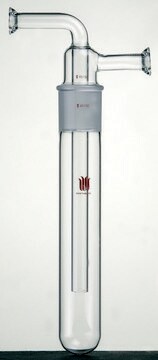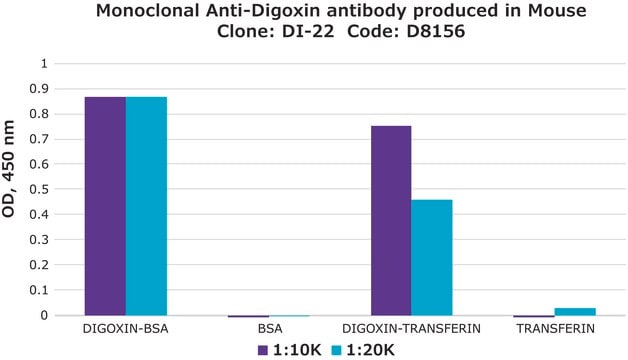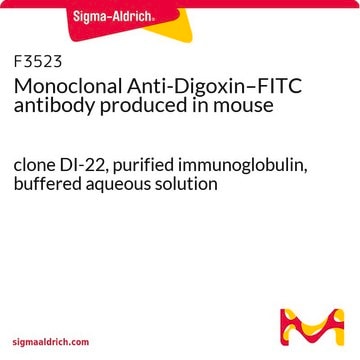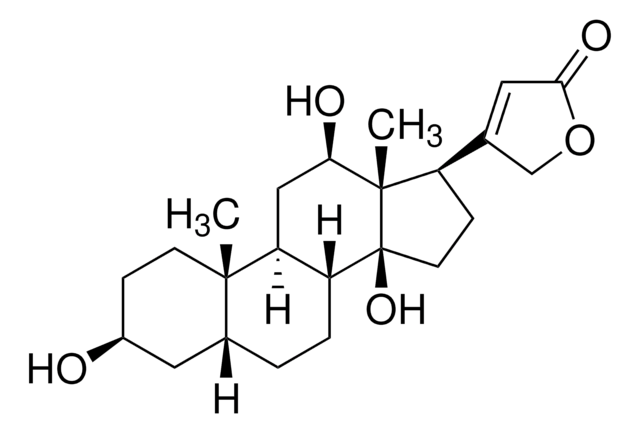11333062910
Roche
Anti-Digoxigenin
from mouse IgG1κ (clone 1.71.256)
Sinônimo(s):
anti-digoxigenin, digoxigenin
About This Item
Produtos recomendados
fonte biológica
mouse
Nível de qualidade
conjugado
unconjugated
forma do anticorpo
purified immunoglobulin
tipo de produto de anticorpo
primary antibodies
clone
clone 1.71.256, monoclonal
forma
lyophilized
embalagem
pkg of 100 μg
fabricante/nome comercial
Roche
técnica(s)
ELISA: 2-4 μg/mL
immunocytochemistry: 0.5-2 μg/mL
immunohistochemistry: 0.5-2 μg/mL
western blot: 0.5-2 μg/mL
Isotipo
IgG1κ
temperatura de armazenamento
2-8°C
Categorias relacionadas
Descrição geral
Especificidade
Aplicação
- ELISA
- Immunohistocytochemistry
- In situ hybridization
- Western blot
- Immunofluorescence staining
- FISH (fluorescent in situ hybridization)
Ações bioquímicas/fisiológicas
Características e benefícios
- Specific to free and bound digoxigenin
- The antibody is not stabilized with protein and therefore suitable as coating antibody in Sandwich-ELISAs and for labeling procedures. For example it can be conjugated with enzymes or fluorescence dyes for direct detection of digoxigenin-labeled samples.
Nota de preparo
- ELISA: for coating: 2 to 4 μg/ml
- Immunohistocytochemistry: 0.5 to 2 μg/ml
- In situ hybridization: 0.2 to 0.4 μg/ml
- Western blot: 0.5 to 2 μg/ml
Working solution: For coating applications
phosphate buffered saline, pH 7.4
Reconstituição
Armazenamento e estabilidade
Nota de análise
Outras notas
Not finding the right product?
Try our Ferramenta de seleção de produtos.
Palavra indicadora
Warning
Frases de perigo
Declarações de precaução
Classificações de perigo
Skin Sens. 1
Código de classe de armazenamento
11 - Combustible Solids
Classe de risco de água (WGK)
WGK 3
Ponto de fulgor (°F)
does not flash
Ponto de fulgor (°C)
does not flash
Certificados de análise (COA)
Busque Certificados de análise (COA) digitando o Número do Lote do produto. Os números de lote e remessa podem ser encontrados no rótulo de um produto após a palavra “Lot” ou “Batch”.
Já possui este produto?
Encontre a documentação dos produtos que você adquiriu recentemente na biblioteca de documentos.
Os clientes também visualizaram
Artigos
Digoxigenin (DIG) labeling methods and kits for DNA and RNA DIG probes, random primed DNA labeling, nick translation labeling, 5’ and 3’ oligonucleotide end-labeling.
Nossa equipe de cientistas tem experiência em todas as áreas de pesquisa, incluindo Life Sciences, ciência de materiais, síntese química, cromatografia, química analítica e muitas outras.
Entre em contato com a assistência técnica














